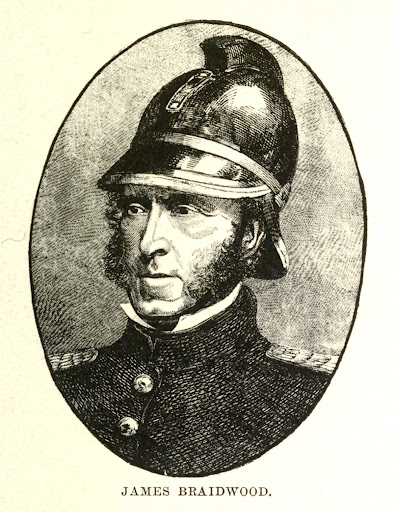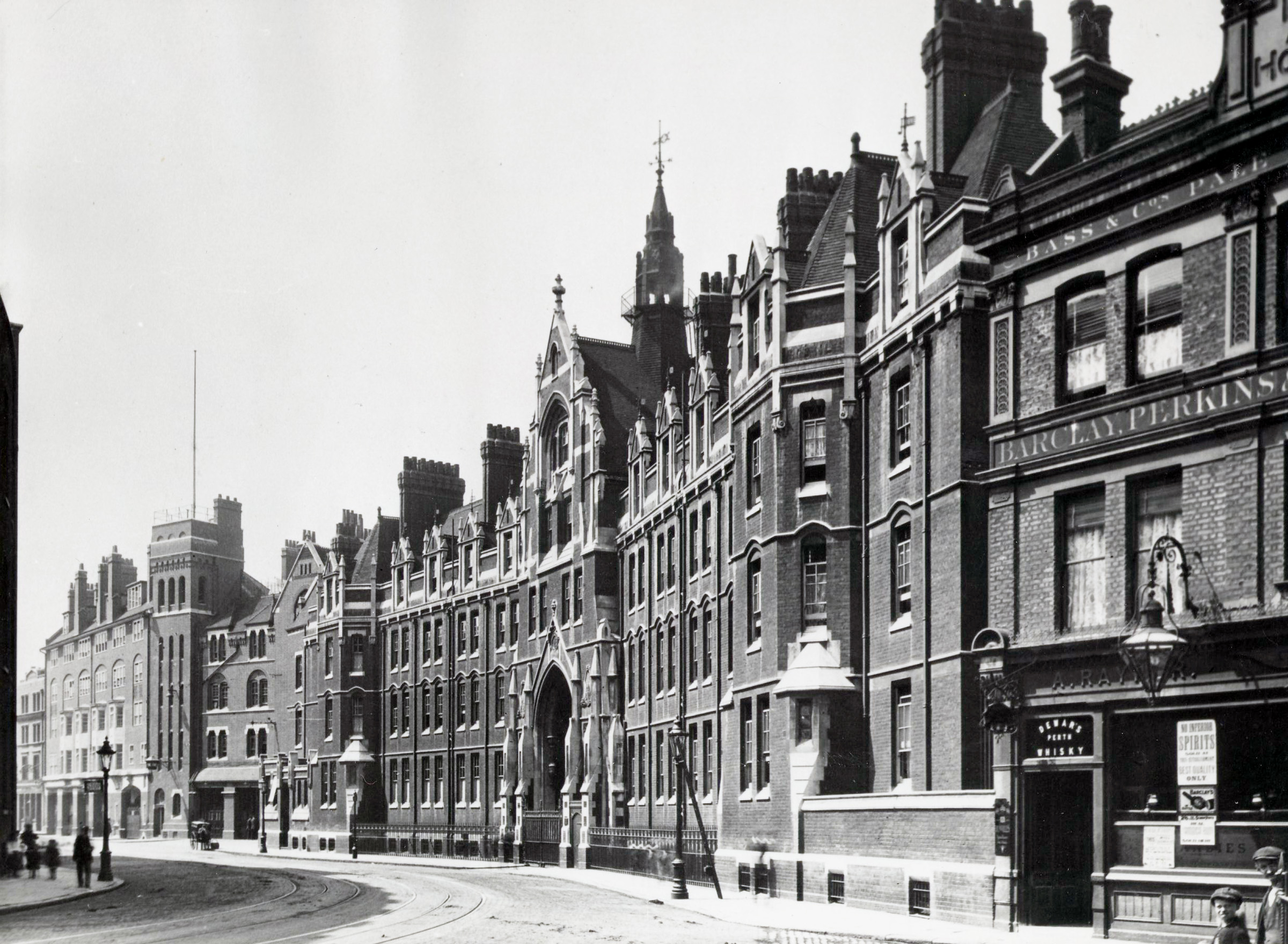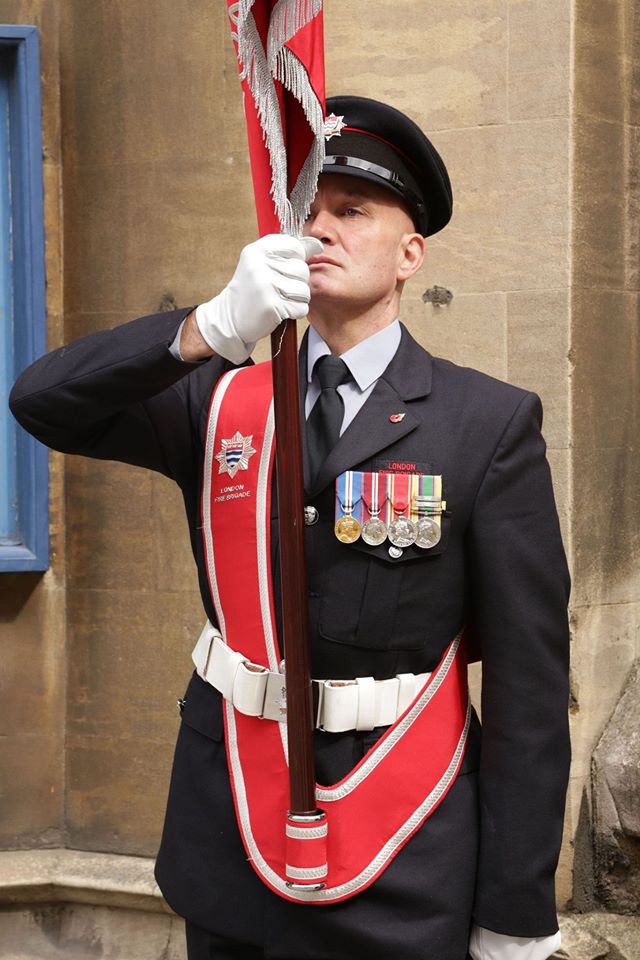
In this age of over-used catchphrases: an age of unprecedented ‘unprecedented’ times, one where tomorrow’s world has apparent scant regard for yesterday’s history the images of the demolition of a major part of the London Fire Brigade’s (LFB) former Southwark training school and the fire station left me feeling more than just a tad sad. So as 141 years of London Fire Brigade heritage succumbs to so called progress a reminder why, to many, its passing is mourned.

The idiom, “a picture is worth a thousand words” certainly has given many old London firemen time to reflect on this remarkable place A place entrenched in the LFB’s iconic history. Its official starting point was 1878, the date that the Metropolitan Fire Brigade moved in. Although we should look a little deeper into London’s fire service history to see what else we can discover. The LFB timeline, I would argue, started with the great-great-grandfather of London’s fire brigade; a Scot brought down to the capital in 1833 to establish the capital’s first properly organised fire brigade-the London Fire Engine Establishment (LFEE), albeit overseen by the Insurance Companies. Braidwood brought to London new ideas and original techniques for his small but novel London fire brigade. He encouraged the revolutionary idea of actually getting into a building to fight a fire and not applying the former insurance brigade’s practice of the ‘long shot’: a hose played at a distance from the outside of the building. (Strange how these things appears to have gone full-circle in recent times!) Braidwood also insisted that no fireman should ever enter a building alone and that there should always be a comrade to assist in case of an accident or if the colleague collapsed due to the heat or fumes. They became the tenets that resonated with firemen/firefighters for generations to come.

It was Braidwood’s tragic death at the Southwark Tooley Street fire in 1861 which brought onto the scene an Irishman this time, one Captain Eyre Massey Shaw. Shaw had been, until then, the Chief Constable and Chief Fire Officer of the City of Belfast. He took up the vacate position of the LFEE’s Superintendent job. But as they would say in today’s parlance the LFEE had become ‘not fit for purpose’. London was expanding. The cost of fire-fighting was growing very higher. The insurance companies struggled to continue to provide an efficient and effective fire service. By 1864/65 it was not a profitable endeavour. They were paid to provide insurance, not to fight fires.
Shaw was the first of London’s Chief Fire Officers, others would follow. Some added significantly to the brigade’s history and its progress, other merely passing through and with one required to resign! Although the use of the word ‘officer’ would much later became a taboo as it’s now all managers and a commissioner in the 21st Century. But two tier entry, so in vogue today, had a long history in the LFB too. Many of its finest offices came into the brigade via that route. The names of Major Cyril Morris. MC; Commander Firebrace. RN and Major Frank Whitford. DSO are to name but a few.


London’s firemen, in the late 1800s, were at the height of the publics acclaim and the Southwark headquarters was the Brigade’s epicentre. But by 1910, in the prelude to the First World War, the fireman’s standing diminished considerably as a wider public struggled to make ends meet and absorb the technological changes. The advent of the motorised engine had started its irreversible course to transform public expectations and attitudes. The LFB was not immune from these pressures and changes and from its hub at the Southwark headquarters policy changes would modernised the LFB. In an extract from ‘Wonderful London’, published in 1920, the commentary went; “Today, such is the rush of modern life, it is probable only a minority of Londoners who know the name of Mr Arthur Reginald Dyer, the present chief officer of the London Fire Brigade. This in spite of the claim that, of all the fire brigades in the world, the LFB is the finest. That this is no idle boast is shown by the fact that from all over the world fire officers come to London to learn our methods of extinction, of organisation, of discipline directed from the Southwark headquarters.” (Dyer had joined the London Fire Brigade as a direct entry principle officer. By 1909 he was promoted to Divisional Officer North, taking up residence above Euston fire station. During the 1914-18 war he was on duty during every air raid on London. In 1917 he was awarded the Kings’ Police Medal for gallantry following a daring hook ladder rescue during the previous August.)
It was noted that Divisional Officer DYER “had shown conspicuous courage on at least two previous occasions, and since his promotion has shown marked ability.” Dyer was injured, at fires, on several occasions. Injuries which later played havoc on his health. At the ‘Siege of Sydney Street’ in 1910 he was one of 5 firemen seriously injured during the building collapsed and was buried under debris. It was Dyer, along with his successor, Major Morris, who modernised London’s then peacetime fire brigade from Southwark until the transfer of the headquarters’ to the new Lambeth location. (Dyer retired on 31st March 1933. The ‘Fireman’ magazine making this tribute: ‘A man of outstanding courage and tact, he is an ideal leader who early gained and has always retained the respect and affection of his men. No British fireman has ever more worthily upheld the great traditions of the service and none has carried with him into retirement as greater measure of esteem and goodwill.” Arthur Dyer died in Sussex on the 4th May 1951.)

Southwark’s time in the LFB wilderness lasted from the late 1930s until the early 1960’s. It fire station however retained its status as one of the capital’s busy inner stations. (This being the days of the London County Council and its 58 fire stations.) It was a casualty of the blitz and suffered bomb damage to the former Metropolitan Fire Brigade frontage which ran along Southwark Bridge Road. Senior officers, and their families, resided in the residential accommodation but adequate funding and maintenance of the site remained a struggle. The Victorian buildings increasingly looked their age.

Except for the very senior retired London firemen, who did their recruit training at the Lambeth headquarters, the vast majority of those joining from the 1960s and into the 1990s attended Southwark to undertake their initial fireman training. It is here that their connection with Southwark, its entrance arch, the cobbled yards, all started. The exception being those who undertook ‘satellite’ training during the mass recruitment drive of the early 1970s.

It’s that Southwark training school, with its slippery granite drill yards, a fleet of basic out-of-service fire engines, 50 foot wooden escape ladders, canvas hose and hook ladder drills that would leave them sweating, either from their sheer exertions or wet through from the drills (and frequently both), before grabbing a mug of tea or a pint of milk from the cigarette smoke filled canteen before doing it all again.
With the creation of the Greater London Council Southwark took on the mantle of the Brigade’s principal training school. Its base for motor driving courses, breathing apparatus training, emergency tender courses and teaching 100 foot turntable ladder operator skills plus recruit training, and later junior officer training, was firmly established. Southwark proudly bore the title of the Brigade’s ‘training school’, it had ‘instructors’ and was ran by the ‘Training Commandant’ in the days before the PC brigade started to change our everyday LFB lexicon.

My own connections with Southwark, its fire station, and later the Training ‘Centre’, remain personal. My junior fireman training started at Southwark. The drill tower sills carried the evidence of hook ladder teeth indentations, evidence (if it were need) of the confidence the ladder gave as you progressed ever higher up the drill towers. The deep grooves letting you know you weren’t the first to punch those ladders up the tower and as your own skills developed the teeth leaving their mark, a message to those who followed in your wake.

My two postings to Southwark fire station, both in junior officer rank, provided the bed-rock for the years that followed. My starting date there was shortly after the Brigade found itself under the leadership of a new Chief. A rather special man too and my nomination for a Chief Officer who steered the brigade forward whilst being able to communicate and relate to the London ‘firemen’s’ lot. That man is the late Joe Milner. His presentation to the Brixton Round-Table on the job of a London firemen’s remains a ‘tour de force’. Yet it was on Joe’s watch that the decision to close Southwark fire station was presented to the GLC for ratification. It was decision that I and others objected to. It was an ill found decision and a hard fight followed. Southwark’s arguments won the day and the station remained open until 2014. Although as great as the man was during his tenure Southwark appears to have remained on the back burner in terms of it revamping and upgrading.

It would not be until the early 1990s that sufficient funds were allocated to a complete overhaul and refurbishment of the now Southwark Training Centre. The cost ran into the millions of pounds. On the back of the Health & Safety Excutive Improvement Notices served on the LFB, following the fatal Gillender Street fire, money poured into Training Department and the main beneficiary being Southwark. Improvements were substantial and meaningful until the ill-fated fire house project ended in tears after it caught fire and was deemed to be beyond economic repair! Despite the much hyped comments of the then Chief Officer (Brian Robinson) that Southwark was a centre of excellence fit for the new millennium it never got too far into it.

The rest, as they say, is history. Southwark is today a redevelopment site. Under new ownership. So where are these guardians of the LFB’s history? Clearly recent events have taken us down paths that have left us ‘dinosaurs’ scratching our heads as to who really cares about its heritage? Sometimes in total disbelief! We LFB retirees are told we no longer understand the complex changes, or values, affecting today’s modern LFB by those in Union Street’s Brigade headquarters ivory tower. What absolute rot. There have always been complex challenges facing the Brigade. Dyer faced, and dealt with, some of the most challenging such as the mechanisation of the LFB and largest fire station closure programme the Brigade has ever gone through. Major Morris forged ahead with building a state of the art fire brigade Headquarters at Lambeth in the mid 1930’s-a bulding that has largely unoccupied since 2007!

Nothing will put the clock back. Southwark’s fate is sealed. Today’s people riding London’s fire engines are significant players in the capitals first responders. It is they who have to cope with the Brigade’s corporate language and the top-down driven standards and values. But it appears that they are also the same people who don’t fight to protect the LFB’s heritage, its values, and have scarce regard for its traditions, its customs and its iconic past. Maybe they only see today and tomorrow. Maybe they are right to do so. But are they just turning the LFB into another utility. Outsourcing whatever they can whereever they can.
I can’t just let this moment pass without a personal tribute, a eulogy if you wish, to that special place we simply called Southwark. If the LFB had a soul Southwark was it keeper. This is a homage is to all that passed through it gates. Some would never to return after their initial recruit’s course, others would return again and again. Yet while we take breath it will remain alive in our memories. But for those whose brought about its demise-SHAME ON YOU.

RIP SOUTHWARK.
Dave. Yet another beautifully emotive piece. Thanks for posting.
Stay safe.
Tony Jones. Chester.
LikeLike
This is such sad news.
LikeLike
I worked at Albert Embankment, as an Administrative Officer and visited the Southwark Training School a few times. What really saddens me is that too many of the beautiful buildings have been sold off for housing, so far too many of us now work (or did, given the times) in bland, airless boxes. Having seen the appalling state that a great deal of the Brigade’s historical records were in and how badly they were stored, I am not surprised that there is little respect for anything other than money.
LikeLiked by 1 person
I did my training there in 62. Never forgot the hook ladder drills and live carry downs from those parapets. Such a shame to seee it go.
LikeLike
Thank you John for taking the time, not only to read the piece, but to write about it. Thanks
LikeLike
Hi. Im Cliff Cleves. I was a trainee fireman there in Sept 1968, from Cardiff, my wife a teacher in Redbridge. We used an old Dennis Pump and the escape ladder with wheels. Very easy to run up fast, at 22 years old… .Hose with warp and weft? Hook ladders were a challenge, two man. I was posted to Stratford. I remember the walk from Canon st stn , over the bridge ,past an old lead works.to Southwark.
LikeLiked by 1 person
Thanks for this very interesting summary. I only recently found out that my grandfather was born in Southwark fire station. My great-grandfather, Alfred Webb, served in the brigade from 1875-1888, getting a personal recommendation from Eyre Massey Shaw when he moved to Australia (he was subsequently fire-chief in NSW) and he and his family lived in the fireman’s quarters from the time they opened. I dropped by to see the site this week, and it was sad to see how little, other than frontage, was preserved. Do you know what happened to the museum that used to be in the building?
LikeLike
Sadly the museum has been put into ‘cold storage’. There are some staff available. Ring the LFB HQ building and ask to be pit through. Good luck.
LikeLike
While not a Firefighter I know Dublin FireBrigade still uses Officer and possibly beds and sofas
LikeLike
Well what a find this blog is, David! I practically grew up at Lambeth HQ as my father, John Simmons was ADCO and worked with Burrell, Milner and Clisby and Clarkson. As a child I’d be dragged to the pump competitions and stood on the balconies to watch the fun; play with DCO Clarkson’s children around the corridors; poached eggs and toast in the canteen; travel around the country following the LFB tug of war team (father was anchor); and steam up and down the Thames on a pleasure cruiser cheering the Lambeth whaler races.
My parent’s marriage was a casualty of the social side of the LFB, so I missed his time at Morten in the Marsh and as Commandant of Southwark Training College. He retired in the early 1990s and passed away in 2014, so it comes as a bit of a shock to read that all that I knew has gone!
I’ll treasure the memories I have but thank you for bringing so much back to me.
As a side note, I saw a photo in your blog of a Watch with a lady wearing white overalls. Can I highlight the importance of the Watch cook to the running of every LFB station I visited? Hot food, any time, day or night; cups of tea… These ladies kept the fire fighters going. My first experience was as barely more than a toddler, my newly promoted Station Officer father decided to take me to the station for the day! There, I got to have my first ever apple crumble and custard at lunchtime with the watch. I doubt fire stations have cooks now – probably replaced by a microwave oven.
LikeLiked by 1 person